Vietnam is a culinary paradise, boasting a rich tapestry of flavors and dishes that reflect the country’s vibrant culture and history. From Hanoi’s bustling streets to the Mekong Delta’s serene waters, Vietnamese cuisine offers something for every palate. Whether you’re a foodie or someone who loves exploring new tastes, here are eight must-try dishes when you visit Vietnam.
1. Pho: The Soul of Vietnamese Cuisine
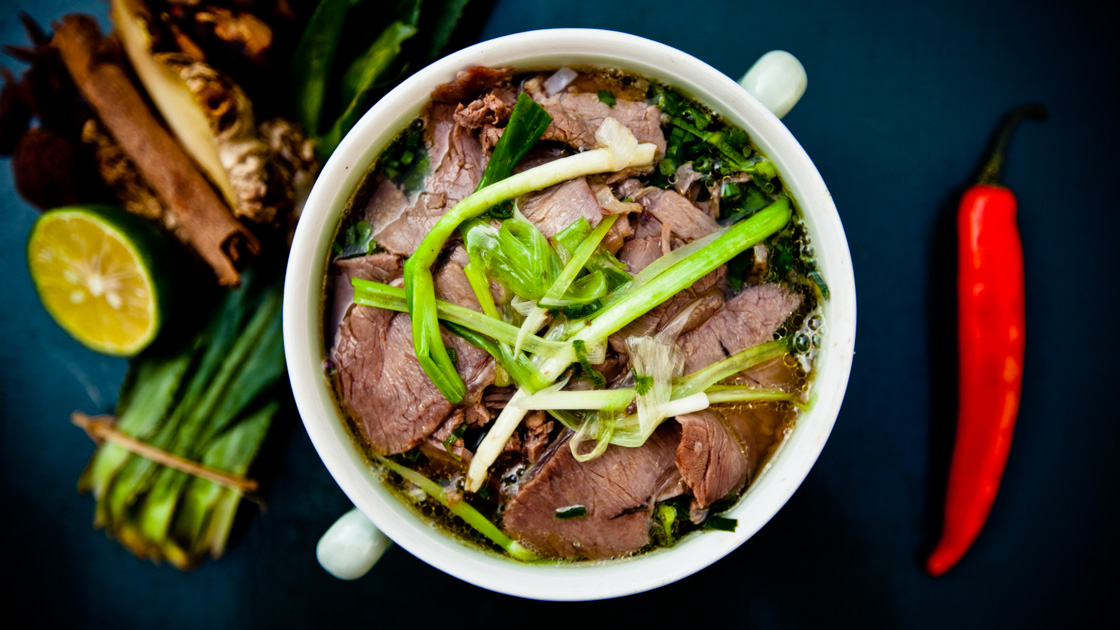
Pho is more than just a bowl of noodle soup; it’s a beloved national dish that symbolizes the essence of Vietnamese cuisine. Originating in the northern part of Vietnam, Pho has evolved into various regional variations, each with its own unique twist.
- The Broth: The heart of Pho is its clear, aromatic broth, which is simmered for hours, sometimes even overnight. The broth is made from beef or chicken bones, combined with spices such as star anise, cinnamon, cloves, and cardamom, along with onions and ginger. This slow-cooking process extracts the deep, rich flavors that make Pho so comforting.
- The Noodles: Pho noodles are flat rice noodles, known for their soft, slippery texture that absorbs the flavorful broth. These noodles are delicate, yet they provide a satisfying bite that pairs perfectly with the broth.
- The Toppings: Pho is typically served with thinly sliced beef or chicken, fresh herbs like cilantro and Thai basil, bean sprouts, and a wedge of lime. Many locals also add a dash of fish sauce or a spoonful of hoisin or Sriracha for an extra kick. The beauty of Pho lies in its simplicity, allowing each ingredient to shine while creating a harmonious balance of flavors.
2. Banh Mi: A Fusion of Flavors
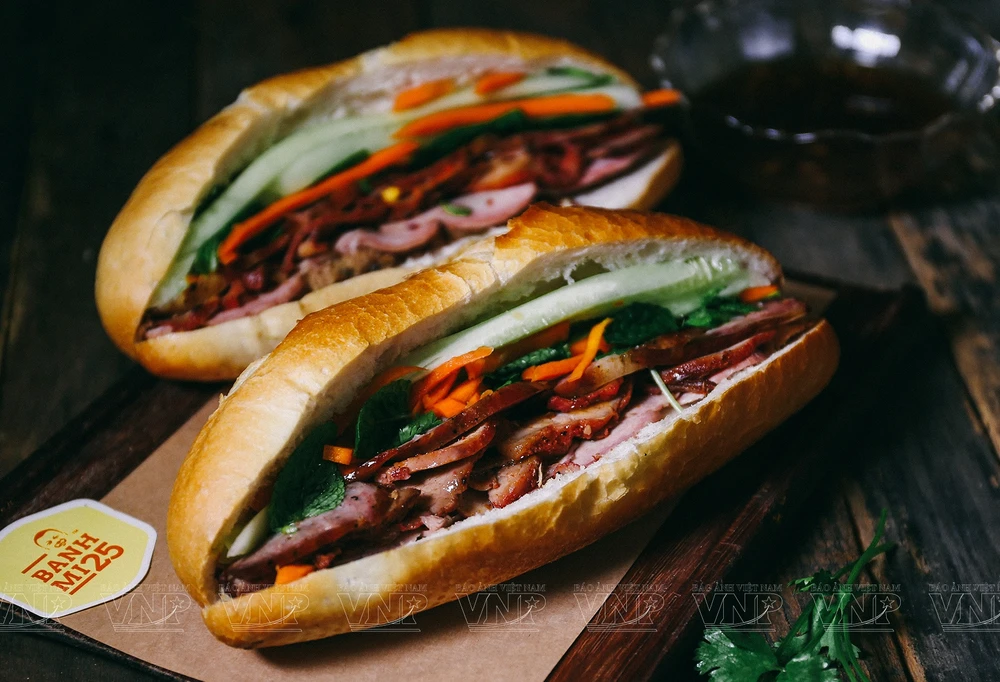
Banh Mi is a testament to Vietnam’s colonial past and its ability to adapt and create something entirely unique. This popular street food is a fusion of French and Vietnamese culinary traditions, making it a true representation of the country’s history.
- The Baguette: At the core of Banh Mi is the baguette, introduced to Vietnam by the French during the colonial period. However, Vietnamese baguettes differ slightly from their French counterparts—they’re lighter, airier, and have a crispier crust, thanks to the use of rice flour in the dough.
- The Fillings: What makes Banh Mi special is its diverse fillings. A typical Banh Mi includes a combination of cold cuts (like pork or ham), pâté, mayonnaise, pickled vegetables (daikon radish and carrots), cucumber slices, and fresh cilantro. Some variations also include fried eggs, grilled meats, or tofu for a vegetarian option. The flavors are a delightful mix of savory, tangy, and spicy, creating a sandwich that’s bursting with taste in every bite.
- The Sauces: The secret to a great Banh Mi lies in the sauces that are often drizzled over the fillings. A blend of mayonnaise and a dash of soy or Maggi seasoning sauce adds a rich umami flavor, while chili sauce brings in a bit of heat. This combination of ingredients creates a sandwich that is not only delicious but also an affordable and satisfying meal for travelers and locals alike.
Also Read: Best Things to Do in Da Nang 2024
3. Goi Cuon (Fresh Spring Rolls): A Light and Refreshing Delight
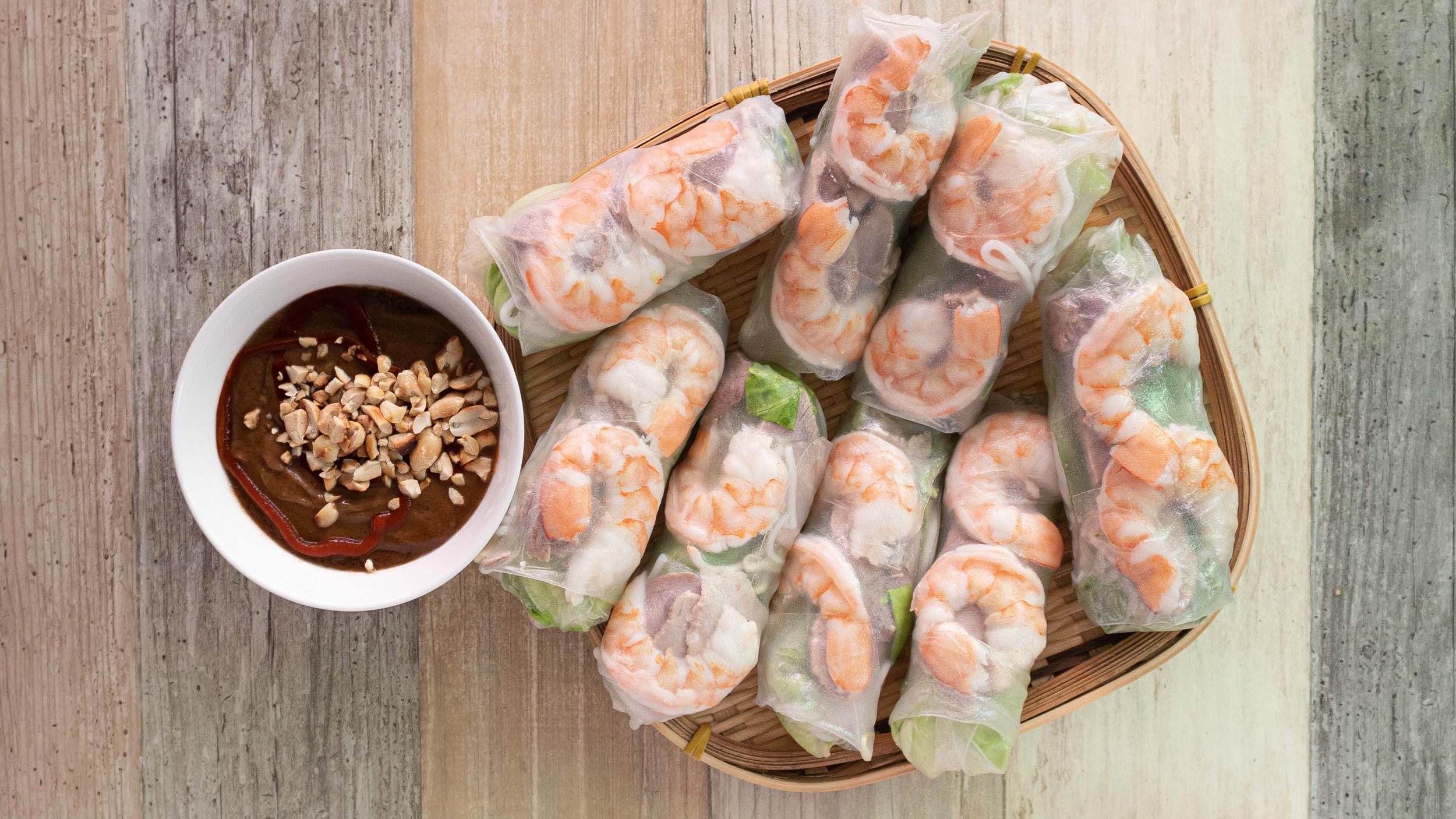
Goi Cuon, also known as fresh spring rolls or summer rolls, are a staple of Vietnamese cuisine, known for their light, healthy, and refreshing qualities. Unlike their fried counterparts, Goi Cuon are served fresh, making them a perfect appetizer or snack.
- The Wrapping: Goi Cuon is made by wrapping a variety of fresh ingredients in translucent rice paper. The rice paper is soft, slightly chewy, and allows the vibrant colors of the ingredients inside to shine through, making it as visually appealing as it is tasty.
- The Fillings: The traditional filling for Goi Cuon includes a combination of shrimp, thin slices of pork, vermicelli noodles, and a variety of fresh herbs such as mint, cilantro, and basil. These ingredients are carefully arranged and rolled into the rice paper, creating a roll that’s bursting with fresh flavors and contrasting textures.
- The Dipping Sauce: Goi Cuon is typically served with a peanut dipping sauce or Nuoc Cham, a traditional Vietnamese dipping sauce made from fish sauce, lime juice, sugar, and garlic. The peanut sauce adds a creamy, savory flavor that complements the freshness of the rolls, while Nuoc Cham provides a tangy, sweet, and slightly spicy kick. The combination of fresh herbs, tender meats, and flavorful dipping sauce makes Goi Cuon a refreshing and satisfying dish, perfect for any time of day.
4. Bun Cha: A Hanoi Specialty
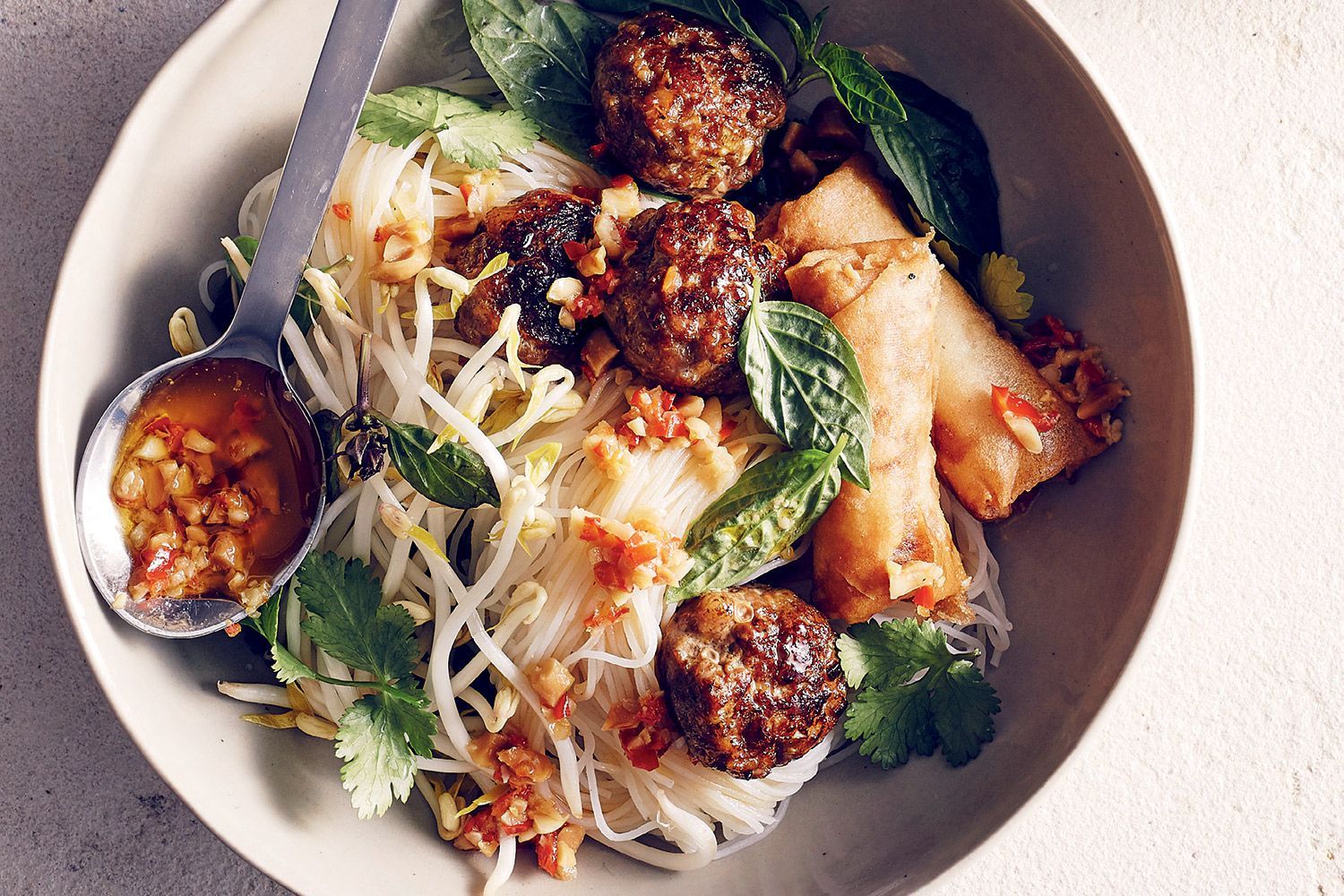
Bun Cha is a quintessential dish from Hanoi, the capital of Vietnam, and it’s a favorite among locals and visitors alike. This dish beautifully combines grilled meats, fresh herbs, and noodles, creating a harmonious balance of flavors that is uniquely Vietnamese.
- The Meat: The highlight of Bun Cha is the grilled pork, which comes in two forms: juicy, caramelized pork patties (cha) and thin slices of pork belly (nem nuong). The meat is marinated in a mixture of fish sauce, sugar, garlic, and lemongrass, then grilled over a charcoal fire until it’s perfectly charred and smoky. The result is tender, flavorful meat that’s rich with the essence of the marinade.
- The Noodles: Bun Cha is served with vermicelli noodles (bun), which are soft and slightly chewy. The noodles are usually served in a separate bowl, allowing you to combine them with the meat and other ingredients as you eat. The simplicity of the noodles allows them to soak up the flavors of the dipping sauce and complement the grilled meat perfectly.
- The Dipping Sauce: The dish is accompanied by a tangy, slightly sweet dipping sauce made from fish sauce, vinegar, sugar, garlic, and chili. This sauce often contains pickled green papaya and carrots, adding a crunchy texture and a subtle sweetness. You dip the meat and noodles into this sauce, creating a deliciously balanced bite every time.
- The Herbs: Fresh herbs like mint, basil, and cilantro are an essential part of Bun Cha, adding a burst of freshness and aroma to the dish. Lettuce and sliced cucumbers are often served on the side, providing a refreshing contrast to the richness of the grilled meat.
Also Read: Best Places to Visit in Vietnam 2024
5. Cao Lau: A Unique Taste of Hoi An
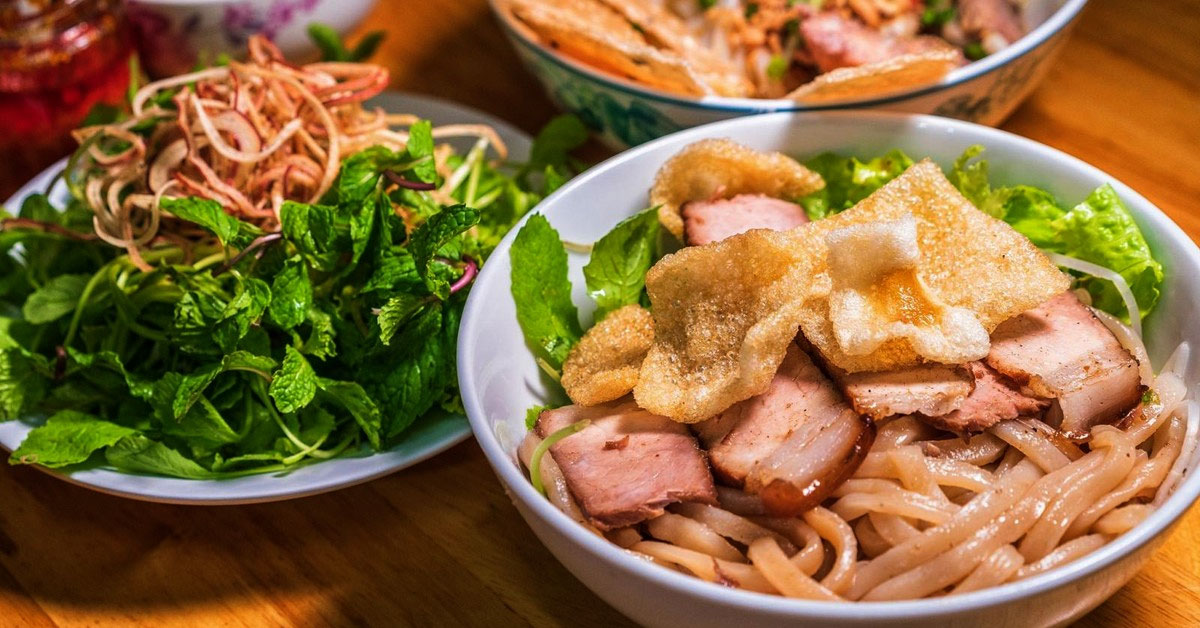
Cao Lau is a dish that’s deeply connected to the ancient town of Hoi An, and it’s said that the authentic version of this dish can only be made in this region due to the special water used in preparing the noodles. This dish is a delightful mix of textures and flavors, making it a must-try for anyone visiting Hoi An.
- The Noodles: The noodles in Cao Lau are what make this dish truly special. They are thick, chewy, and have a slightly yellow hue. The noodles are made from local water that’s been infused with ash from a specific type of tree, giving them a unique texture that can’t be replicated elsewhere.
- The Pork: Cao Lau is typically topped with thin slices of marinated pork, which has been slow-cooked to perfection. The pork is tender and flavorful, often seasoned with soy sauce, sugar, and spices, giving it a savory-sweet flavor that pairs beautifully with the noodles.
- The Broth: Unlike other Vietnamese noodle dishes, Cao Lau doesn’t come swimming in broth. Instead, it’s served with just a small amount of rich, concentrated broth made from pork bones. The broth is poured over the noodles to lightly coat them, allowing the other ingredients to shine through.
- The Crunch: One of the distinguishing features of Cao Lau is the addition of crispy rice crackers or fried noodles on top. These crunchy elements add texture to the dish, contrasting with the soft noodles and tender pork. Fresh herbs and bean sprouts are also mixed in, adding brightness and freshness to every bite.
6. Com Tam (Broken Rice): A Comfort Food Classic
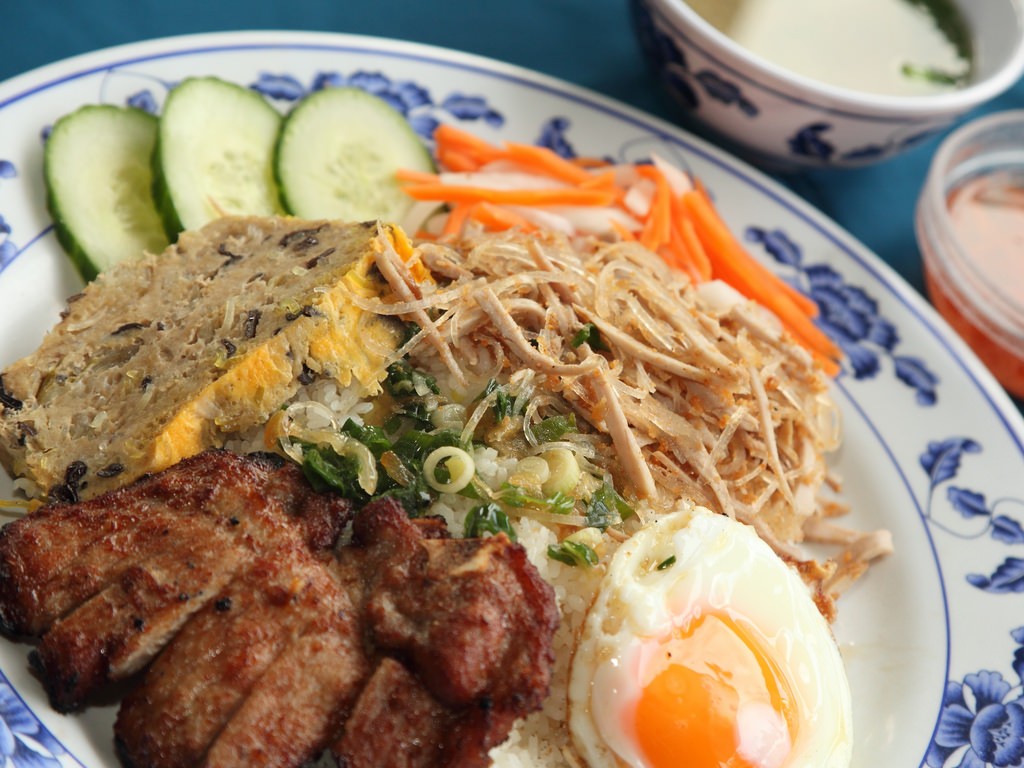
Com Tam, or broken rice, is a dish that originated in southern Vietnam, particularly in Saigon (now Ho Chi Minh City). Once considered a humble dish made from rice that was broken during the milling process, Com Tam has become a beloved comfort food that’s enjoyed at any time of the day.
- The Rice: The key ingredient in Com Tam is the broken rice itself. This rice has a distinct texture—softer and more delicate than regular long-grain rice. Despite its humble beginnings, broken rice is now a sought-after ingredient that forms the base of this hearty dish.
- The Toppings: Com Tam is typically served with a variety of protein-rich toppings, the most common being grilled pork chops (suon nuong). These pork chops are marinated in a mixture of fish sauce, sugar, garlic, and lemongrass, then grilled to perfection. Other toppings may include steamed pork and egg custard (cha trung), shredded pork skin (bi), or a fried egg (trung op la) for an extra layer of richness.
- The Accompaniments: A plate of Com Tam is often garnished with a medley of pickled vegetables, such as carrots and daikon, and fresh cucumber slices. These pickles add a tangy crunch that balances the richness of the meat. The dish is usually served with a small bowl of Nuoc Cham, a fish sauce-based dipping sauce that’s slightly sweet, tangy, and spicy. Drizzling this sauce over the rice and toppings ties all the flavors together.
- The Presentation: Com Tam is typically served as a beautifully arranged plate, with the rice forming a bed for the grilled meats and other accompaniments. The vibrant colors of the pickles, the golden-brown pork chop, and the fresh green herbs make this dish as visually appealing as it is delicious.
Also Read: Best Things to Do in Hanoi 2024
7. Hu Tieu: A Versatile Southern Delight
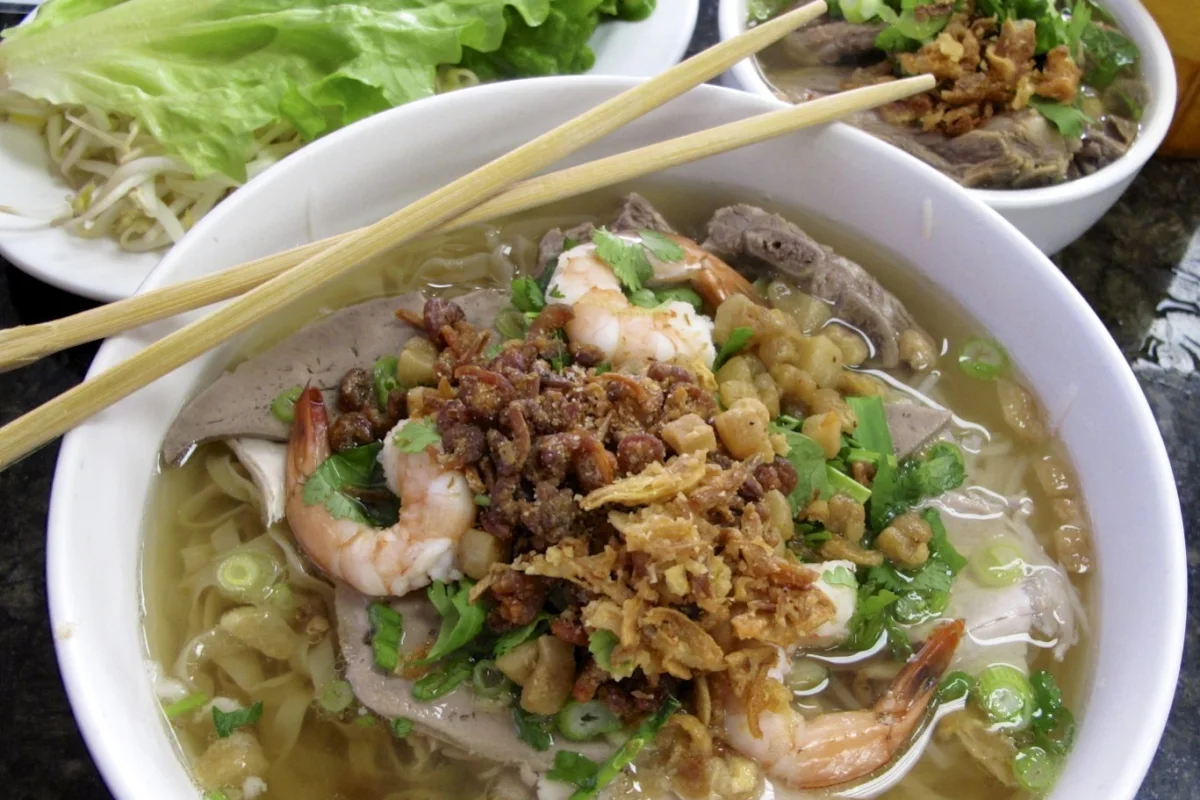
Hu Tieu is a beloved noodle dish in southern Vietnam, known for its versatility and variety. Originating from the Mekong Delta, this dish has Chinese, Khmer, and Vietnamese influences, making it a true fusion of flavors.
- The Noodles: The type of noodles used in Hu Tieu can vary depending on personal preference or regional variations. The noodles can be thin and delicate, similar to vermicelli, or thicker and chewier, like flat rice noodles. Some versions even use egg noodles or glass noodles made from mung bean starch. The flexibility in noodle choice allows each bowl of Hu Tieu to have its own unique texture.
- The Broth: Hu Tieu can be served either dry (with the broth on the side) or as a soup, with the noodles swimming in a clear, flavorful broth. The broth is usually made from pork bones, dried shrimp, and sometimes chicken, creating a light yet savory base. The addition of rock sugar and daikon radish gives the broth a natural sweetness that balances out the salty, umami flavors.
- The Toppings: The toppings for Hu Tieu are just as diverse as the noodles themselves. A typical bowl might include slices of tender pork, shrimp, squid, fish balls, or even quail eggs. Some versions also include crispy fried shallots, garlic, and fresh herbs like cilantro and green onions. The dish is often garnished with lime wedges, chili, and bean sprouts, allowing you to customize the flavor to your liking.
- Variations: Depending on where you are in Vietnam, Hu Tieu can take on different forms. For example, Hu Tieu Nam Vang, a popular version from Saigon, includes a mix of pork, shrimp, and offal, while Hu Tieu My Tho, from the Mekong Delta, features a clearer broth and a slightly sweeter taste. No matter which variation you try, Hu Tieu is a delightful dish that offers a comforting yet complex flavor profile.
8. Che (Vietnamese Dessert): A Sweet Ending
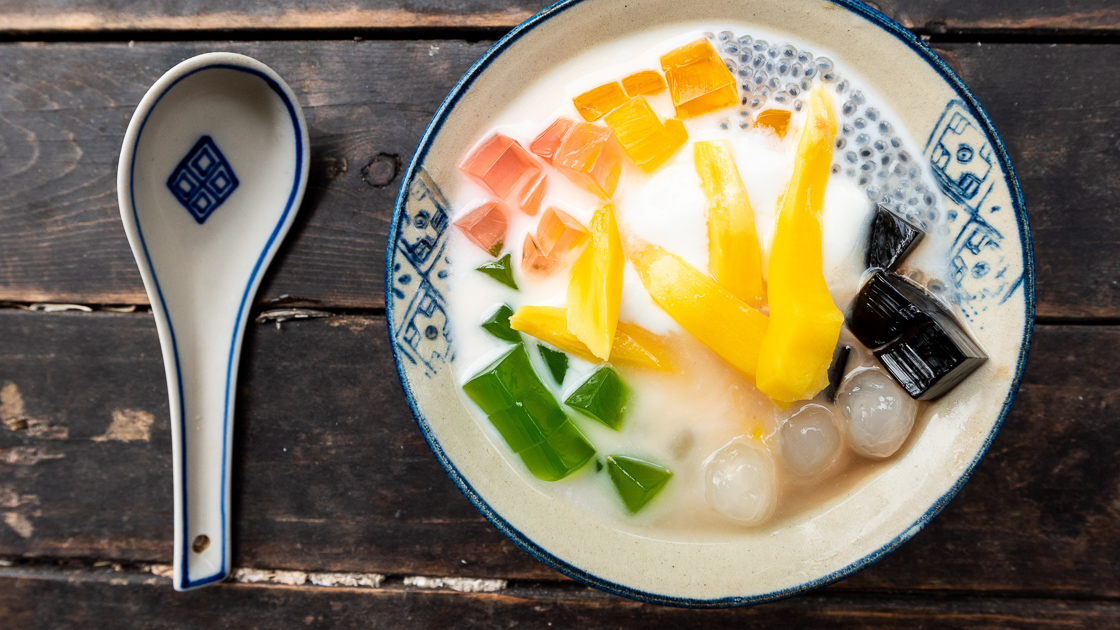
Che is a broad term that refers to a variety of traditional Vietnamese desserts, many of which are served in a soup or pudding-like form. These desserts are often enjoyed as a refreshing snack or a sweet ending to a meal, and they showcase the creativity and diversity of Vietnamese cuisine.
- Che Ba Mau (Three Color Dessert): One of the most popular versions of Che is Che Ba Mau, also known as the three-color dessert. This vibrant dessert is made with layers of mung bean paste (green), red kidney beans or azuki beans (red), and pandan-flavored jelly or grass jelly (yellow or black). These ingredients are placed in a glass and topped with sweetened coconut milk and crushed ice, creating a refreshing, sweet treat that’s perfect for a hot day. The combination of textures—from the creamy coconut milk to the chewy jelly—makes this dessert as fun to eat as it is to look at.
- Che Troi Nuoc (Glutinous Rice Dumplings in Ginger Syrup): For a warm, comforting dessert, Che Troi Nuoc is a must-try. This dessert consists of glutinous rice dumplings filled with sweet mung bean paste, served in a fragrant ginger syrup. The dumplings are soft and chewy, while the syrup adds a spicy, warming sweetness that’s especially comforting on a cool evening. Sometimes, the dessert is garnished with a sprinkle of toasted sesame seeds or shredded coconut, adding a nutty crunch.
- Che Bap (Corn and Coconut Sweet Soup): Another popular Che is Che Bap, a sweet soup made from fresh corn, sticky rice, and coconut milk. The sweetness of the corn pairs beautifully with the rich, creamy coconut milk, creating a dessert that’s both satisfying and light. Che Bap can be served warm or chilled, making it a versatile treat that’s enjoyable year-round.
- The Ingredients: Che desserts often incorporate a wide range of ingredients, including beans, fruits, jellies, and grains. Common ingredients include mung beans, lotus seeds, taro, sweet potato, and black-eyed peas. Coconut milk is a key component in many Che desserts, adding a rich and creamy flavor that balances the sweetness of the other ingredients.
- The Experience: Enjoying Che is not just about the taste—it’s also about the experience. These desserts are often served in small cups or bowls, and many street vendors or dessert shops offer a variety of Che to choose from. The vibrant colors, diverse textures, and unique flavors make Che a delightful way to end a meal or enjoy a sweet treat throughout the day.
Also Read: Download Vietnam Itinerary
Discover Vietnam with Star Vacations
Ready to embark on a culinary adventure through Vietnam? Let Star Vacations guide you on a journey to experience these delectable dishes firsthand. Our customized tours are designed to immerse you in the local culture, ensuring you taste the best that Vietnam has to offer.
Call us today at +91 95822 54235 to book your trip and start planning your Vietnamese food adventure!













